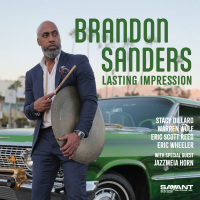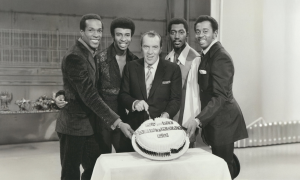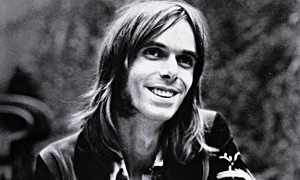Home » Jazz Articles » Film Review » Miles Electric: A Different Kind of Blue
Miles Electric: A Different Kind of Blue
 Miles Davis
Miles DavisElectric Miles: A Different Kind of Blue
Eagle Eye Media EE39020-9
2004
By the time Miles Davis hit the stage at the British Isle of Wight Festival on August 29, '70, he was fomenting yet another stylistic leap forward, this time with a concept that revolved around extremely loose sketches that were mere starting points for collective improvisation in an aggressively electric context. Unfortunately, he had also alienated much of his core constituency, fans who were more accustomed to the acoustic Miles of the second quintet with Herbie Hancock, Wayne Shorter, Ron Carter and Tony Williams, the Miles of Kind of Blue and Miles the interpreter of the Great American Songbook. If Bitches Brew was a calling card to a more dense, rock and funk-inflected Miles, the group that followed—saxophonist Gary Bartz, electric bassist Dave Holland, drummer Jack DeJohnette, percussionist Airto Moreira, electric pianist Chick Corea and organist Keith Jarrett—pushed the limits even further, with a thick and, at times, nearly unfathomable chaos that clearly challenged anyone who thought that Miles had "sold out."
Miles' evolving electric approach may have targeted the younger audience that he ultimately acquired, and the music may have relied more on danceable or hypnotic rhythms, but there was no sense of compromise in his music, as the concert footage from the Isle of Wight Festival on the new DVD, Miles Electric: A Different Kind of Blue clearly attests. This music is as free as anything Miles ever did. Sure, Holland, DeJohnette and Moreira would loosely maintain a semblance of rhythm, but Corea and Jarrett were layering ever-shifting dissonant harmonies for Miles and Bartz to expound upon, making this music challenging, and hardly a concession to anything.
The ever-irascible Stanley Crouch, in one of the many interviews that comprise the documentary surrounding performance footage on the DVD, asserts "That's bullshit, see that was all just part of the Miles Davis myth. Miles Davis was trying to make some money. Miles Davis was so great that to see him grovel before these commercial arenas by the end of his life was really very difficult. So people had to say 'no, no, no, he didn't sell out, he's moving ahead.'" It may be true that Miles was, on one level, motivated by more worldly concerns, but on the evidence of his performance at Isle of Wight it becomes clear that the music he would make from Bitches Brew through to the mid-'70s when he went into temporary retirement was more strongly compelled by a lifetime characteristic of never looking back, always looking forward.
By this time Miles was clearly influenced by artists including Jimi Hendrix and James Brown, but while his trumpet playing would ultimately emulate some of Hendrix's style, including his sharp, staccato attack and wah wah effect, he was still speaking the harmonic language that had been evolving since the second quintet of the mid-'60s. And as the rhythms became more jungle-like, the grooves more hypnotic, the harmonic backdrop more convoluted and outré, Miles would maintain and develop this harmonic conception.
All this points to Miles' 38-minute performance at Isle of Wight in '70, which is the centrepiece of the DVD, and exhumed footage that fans of Miles' electric period will find essential and naysayers may find illuminating. The interviews that surround the performance shed light on Miles the man, the musician, the innovator. Keith Jarrett, who self-admittedly hated the instrument he was playing, nevertheless asserts in one of his somewhat uncharacteristically congenial interview segments, that the Isle of Wight performance was truly a history lesson of jazz, that it had it all. And if one looks at the individual contributions of the players, it becomes clear that Jarrett's comment is spot on.
And while some of Miles' band members talk about how they were thrown into a "sink or swim" scenario with the use of electric instruments —Hancock and Corea in particular -they all, with the exception of Jarrett, not only found new possibilities with these instruments, but would ultimately go on to make them an integral part of what they would do with their own projects. Hancock demonstrates the richness and mystery of the Fender Rhodes electric piano, while Corea illustrates the odd dissonances that become possible when feeding it through a ring modulator.
And the musicians were sometimes unsure about what they were doing, but that was simply part of Miles' way to get people to "play what you don't know." By putting the players off-balance, he encouraged experimentation. Hancock relates how, after one particular recording session, guitarist John McLaughlin asked him if what they had done was any good. Hancock replied that he didn't know, but that when it ended up on record it always sounded good. This degree of unbalance and uncertainty created an environment where anything was possible and nothing was out of order, again strongly demonstrated on the Isle of Wight performance.
The documentary is also peppered with other brief performance segments, including a '64 performance of "So What," a later clip of "Bitches Brew" and some '70s footage with saxophonist Dave Liebman and guitarist Pete Cosey, helping to place the Isle of Wight performance in historical context. And the interviews, with everyone from the band plus a number of other Davis collaborators and appreciators over the years including James Mtume, Pete Cosey, Joni Mitchell and Carlos Santana, paint a portrait of Miles as a man who may have said very little, but was always profound. And at the conclusion of the Isle of Wight performance are a number of tributes to Miles: a painting by Mitchell that is uncannily blue in tone; Santana demonstrating Miles' use of space in an interpretation of Sketches of Spain on guitar; a rousing percussion tribute by Moreira; and an impressionistic electric piano elegy by Hancock.
Along with the 85-minute documentary/performance, the DVD includes over half an hour of additional interview footage that includes an especially enlightening interview with bassist Marcus Miller, talking about how his relationship with Miles in the '80s evolved. There's also a sessionography of Miles' first electric period from '67 to '75, available on DVD-ROM.
Miles Electric: A Different Kind of Blue may not convert any purists who looked at Miles' electric work as something less than the greatness he had achieved in the past, but it may give them some perspective and shed new light on an period which, in the past 15 years, is finally being recognized for the groundbreaking music it truly was. And fans of the era can rejoice that this footage has finally been released and, even better, surrounded by an informative documentary that, in the words of those who knew him, provide insights into the often enigmatic Miles Davis.
Track Listing: A Spiritual Orgasm; "So What" Kind of Blue 1964; Fender Rhodes Piano, The New Electric Toy; Bitches Brew Shaking the Foundations; Betty Davis and Miles' Hard Core Rock; Boxing, Improvisation and Miles' Music; Caught Up in the Craziness of the Sixties; The Critics' Jazz -The Dirty Word; Embracing the Shock of Electricity; The Isle of Wight -The Sidemen; "Call It Anything" -The Isle of Wight Concert 1970; Tributes to Miles' Genius; End Credits Bonus Features: Additional Interview Footage; First Electric Period Sessionography 1967-1975, compiled by Enrico Merlin (DVD-ROM only)
Personnel: Isle of Wight performance by: Miles Davis (trumpet), Gary Bartz (soprano saxophone), Chick Corea (piano), Keith Jarrett (organ), Dave Holland (electric bass), Jack DeJohnette (drums), Airto Moreira (percussion) Featured interviews with the band plus Carlos Santana, James Mtume, Herbie Hancock, Marcus Miller, Stanley Crouch, Dave Liebman, Joni Mitchell, Paul Buckmaster, Bob Belden, Pete Cosey
Additional performance footage including Wayne Shorter (tenor saxophone), Herbie Hancock (piano), Ron Carter (bass), Tony Williams (drums), Pete Cosey (guitar), James Mtume (percussion), Dave Liebman (soprano saxophone) and others.
Tags
PREVIOUS / NEXT
Support All About Jazz
 All About Jazz has been a pillar of jazz since 1995, championing it as an art form and, more importantly, supporting the musicians who make it. Our enduring commitment has made "AAJ" one of the most culturally important websites of its kind, read by hundreds of thousands of fans, musicians and industry figures every month.
All About Jazz has been a pillar of jazz since 1995, championing it as an art form and, more importantly, supporting the musicians who make it. Our enduring commitment has made "AAJ" one of the most culturally important websites of its kind, read by hundreds of thousands of fans, musicians and industry figures every month.























